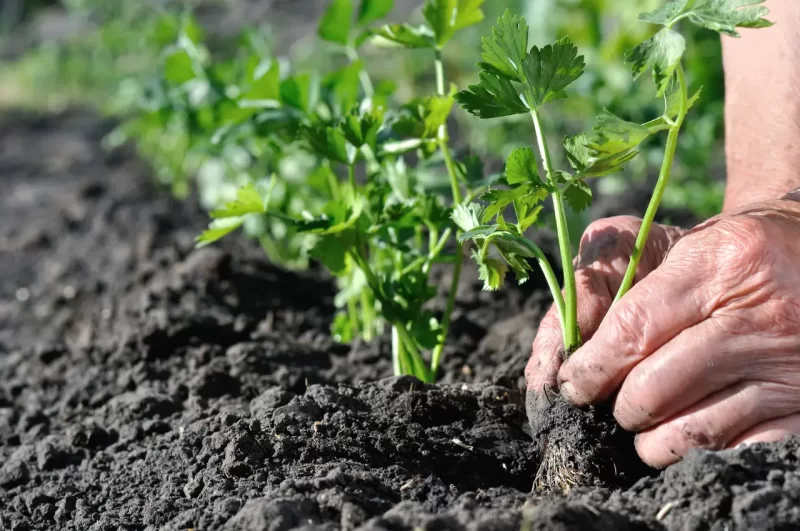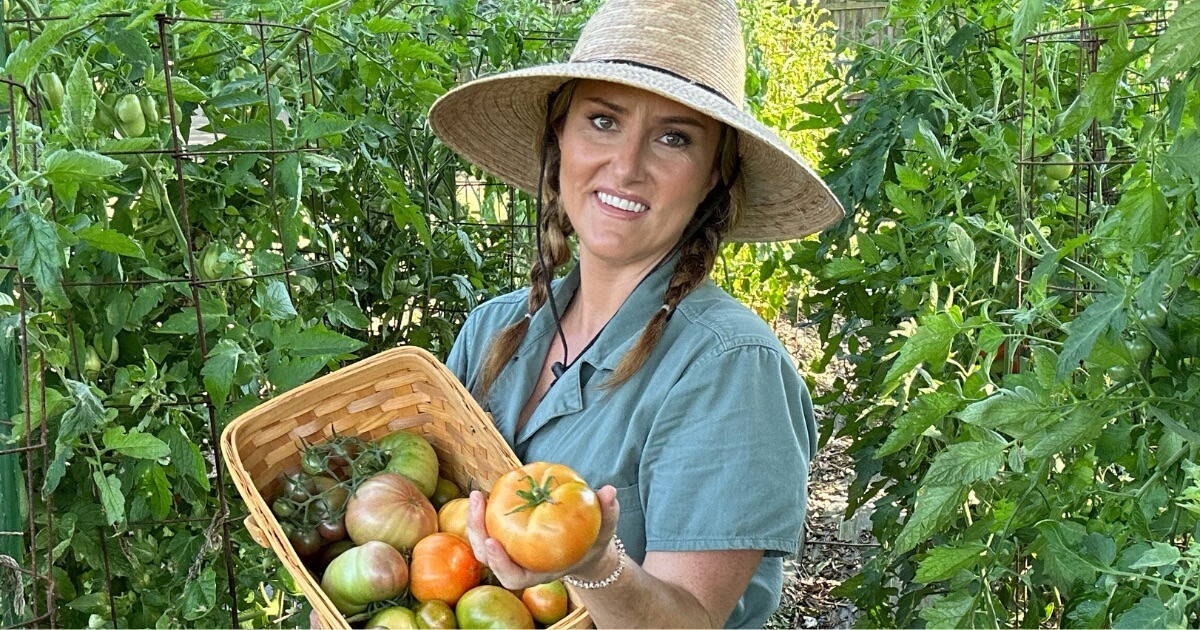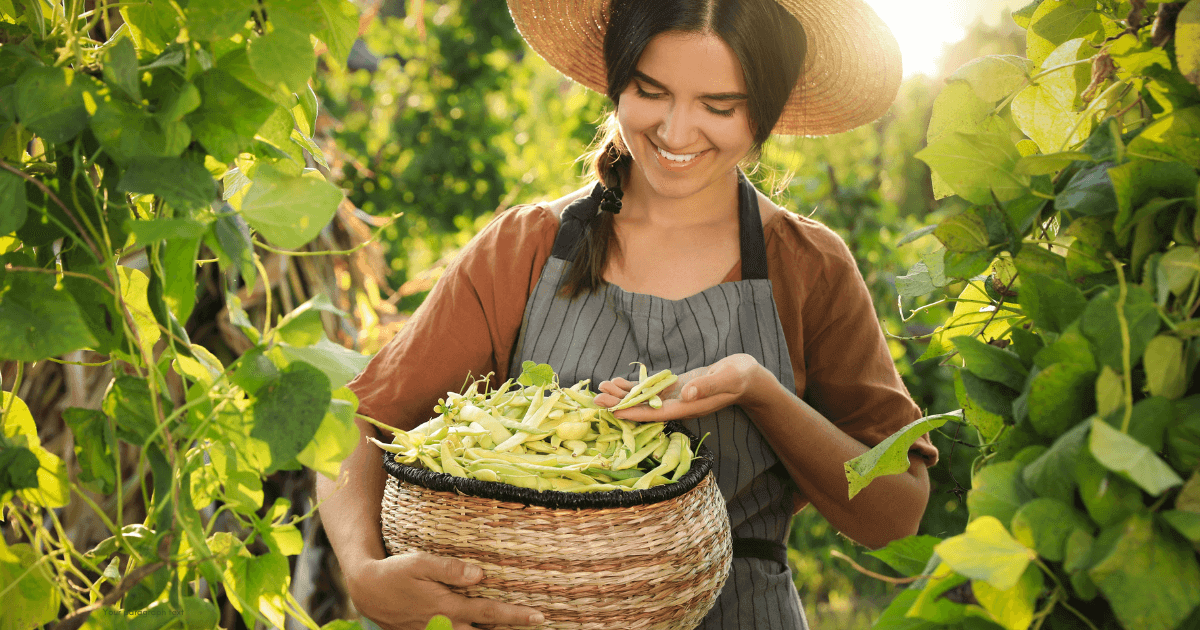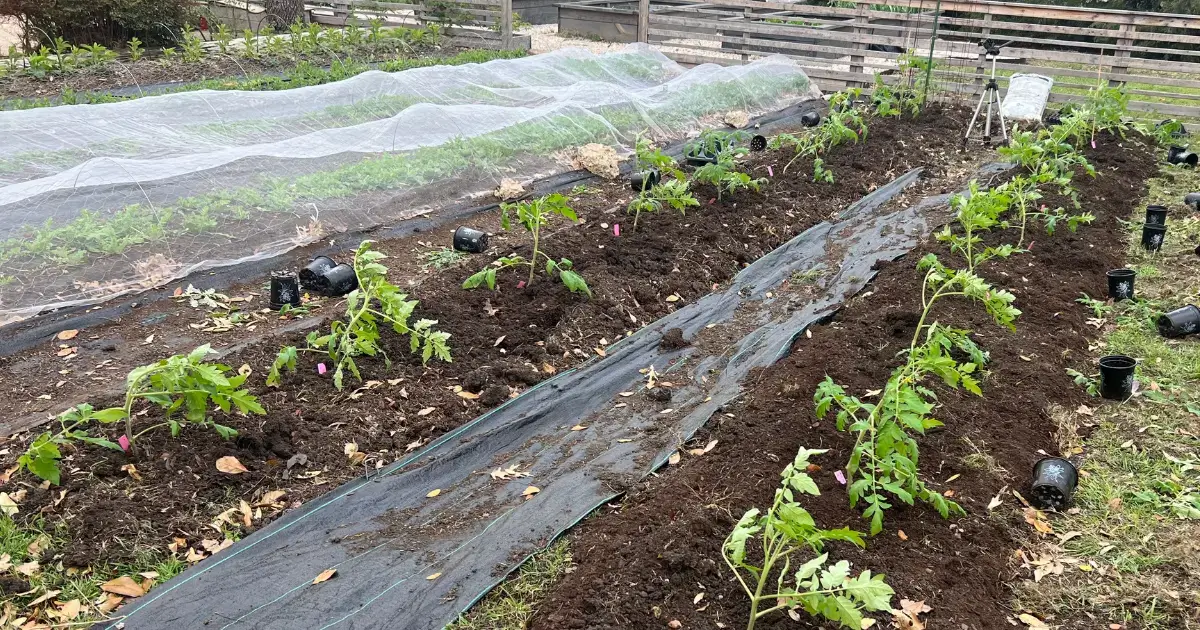
Curious about growing celery in your North Texas garden? It can be done, but it’s important to know that growing celery is not without its challenges because of our unique climate.
If you want to give celery a try this year, here is a comprehensive guide that will walk you through everything you need to know about cultivating celery in the North Texas area.
Best Time to Plant Celery in North Texas
As with all garden vegetables, the key to growing celery in North Texas is proper timing.
Celery is a particularly slow-growing vegetable. It can take up to 3 weeks for celery to germinate, and it can take up to 4 months to reach maturity in the garden.
Start celery by seed indoors in December and transplant out into the garden in March. For a fall harvest, start seeds indoors in May and transplant out into the garden in August.
Site Selection and Soil Preparation
Celery needs specific conditions to thrive:
- Rich, well-draining soil with high organic matter content
- Slightly acidic to neutral pH (6.0-7.0)
- Full morning sun with afternoon shade during hot months
- Protection from strong winds
Before planting, amend your soil with plenty of high quality compost purchased from a local nursery. (The products marketed as compost at Home Improvement stores are not actual compost.) Compost adds nutrients, improves soil texture and helps to balance pH.
A good rule of thumb is to add one bag (2 cubic feet) of compost for every 3-4 square feet of garden space and mix it thoroughly into the top 6-8 inches of soil. If you have clay soil, also add expanded shale.
Planting Process
Start celery seeds indoors 10-12 weeks before transplanting outdoors. For spring planting, start seeds in December; for fall planting, begin in June.
The seeds need:
- Temperatures between 70-75°F for germination
- Consistent moisture
- Bright light
- Planting 1/4 inch deep

Watering Requirements
Consistent moisture is crucial for celery development in North Texas:
- Maintain even soil moisture with regular
watering using a drip irrigation system (ideal),watering by hand, or sprinklers. - Apply 1-2 inches of water per week.
- Use shredded hardwood mulch to retain moisture and regulate soil temperature.
Temperature Management
Our crazy hot summers are the biggest obstacle to growing celery successfully in North Texas:
- Protect plants from afternoon sun during early summer as celery nears maturity.
- Use
shade cloth when temperatures exceed 85°F. - Apply extra mulch during heat waves.
- Consider row covers for unexpected temperature drops in spring.
Fertilization Schedule
Regular feeding helps produce tender, flavorful stalks:
- Amend soil before planting with Micro Life Multi Purpose (6-2-4) or fertilize weekly with fish emulsion 5-1-1.
- Stop fertilizing 2 weeks before harvest.
Common Challenges in North Texas
Be prepared to address these regional challenges:
- Heat stress during summer months
- Dry soil conditions due to irregular rainfall
- Poorly draining clay soil
- Common pests like aphids and leaf miners
Harvesting Your Celery
Harvest celery when stalks reach desired size, typically 6-8 inches from soil to first leaf:
- Cut entire plant at soil level for one-time harvest.
- Remove outer stalks as needed for continuous harvesting.
- Dunk harvested celery into cold water immediately after harvest.
- Harvest before temperatures consistently exceed 85°F.
- Store harvested celery in refrigerator for up to two weeks.

Tips for Success
- Choose heat-tolerant varieties like ‘Tango’.
- Blanch stalks for milder flavor by wrapping lower portions in paper two weeks before harvest.
- Monitor for signs of heat stress or water deficiency.
Conclusion
By properly amending soil before planting, maintaining even soil moisture levels, and planting as early as possible in the spring, you’ll have a better chance of success growing celery here in North Texas.
Remember that each growing season brings new learning opportunities, and don’t be discouraged if your first attempt isn’t perfect.
With practice and patience, you’ll develop the skills needed to grow fresh, healthy food from your own garden.
- Can Eating Tomatoes Help Prevent Weight Gain? New Study Says Yes - May 25, 2025
- New to Gardening? Join Our Step-by-Step Beginner Gardening Class - April 24, 2025
- Why “Intensive” Gardening is Not Good - March 9, 2025



